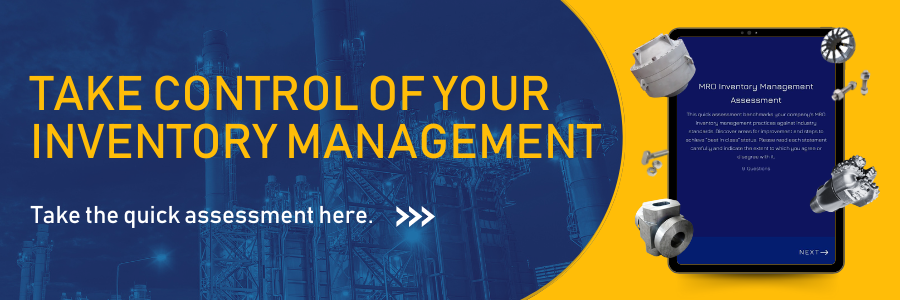Too Much is NOT a Problem
You can’t have too much inventory…Ask our Maintenance staff
An executive at a large energy company recently told me this when discussing inventory at their organization. This discussion was the first in an engagement to help them improve the inventory mix and outcomes across the enterprise. The director said they have differing stocking procedures for each facility and then again for each crew at the facility. This led to 80% of all items in stock being held more than five years with no movement and an ever-increasing stock value. When we spoke about what has worked for them in the past, the only success they had resulted from three activities with mixed, non sustainable success.
- Manual holding reviews (min/max) and even then, they were not done to provide consistent and sustainable results, so they were back to the same spot in no time. They provided no guidance and gave the review to an intern who was an Excel “Guru” but had no experience or education in reliability or inventory management.
- They were transferring excess stock from one facility to another. This showed great promise, but as time went on and the data was analyzed, the facts didn’t bear out consistent success. The same flawed logic that caused the overstocking in the first place caused the request for items to be transferred that were not needed.
- They only allowed a specific dollar amount of requisitions to be approved per day per facility that was not for corrective work orders. We looked at the data and found an unusually large amount of corrective work orders that were canceled after the PO’s were issued at a couple of the facilities. This led to further investigation, which uncovered a practice of creating work orders as corrective to order parts and canceling them after the PO’s were issued as replenishment requisitions were reviewed and held under the dollar threshold. Still, corrective-related requisitions flow with very little pushback. One warehouse manager we interviewed broke down in tears, telling us that he knew the maintenance staff did that, but he reported to the head of maintenance for the facility, with the fear of losing his job ever present. Funnily enough, the maintenance head didn’t know if they held an inventory value of $5 Million or $500 Million and said he had never really cared what the inventory investment was as that wasn’t his job. When asked who owns the inventory, he said someone at corporate.
On a side note the inventory turns were much lower at the facilities where we discovered the issue with corrective work orders compared to like facilities (size, equipment and location).
- No ground rules for employees to know how to make decisions for what to order and when to order. How do onsite personnel handle stocking decisions, repairable items, return to stores, inventory disposals, who is accountable, and so on?
- Or a system to centrally set holding levels based on consistent business rules.
- Unclear accountabilities. Lack or accountabilities to ensure consistent inventory outcomes.
- Limited metrics & reporting that drive improved inventory outcomes.
- Minimal reporting has been developed to drive inventory performance. The only inventory management reporting the company had created was for the corporate supply chain mainly to report to finance and internal audit.
- Little or no staff training in inventory management
- Basic training on how to transact in the ERP system but not WHY they stock and hold inventory.
- Little or no systematic review processes or inventory review guidance to provide consistency and sustainability
- They would give a review project to an intern because he is an Excel “Guru.” even though he had no inventory or reliability management experience.
- There was not a focus on dealing with overstock and obsolete items inventory. ~80% of the inventory held on at all facilities did not move, and less than 5% was marked as critical or insurance in the system.
- Lack of trust in the inventory levels
- During the interviews, it became evident that there was a lack of trust in the inventory levels in the system, which caused overstocking and increased holdings. Upon further investigation, the review determined that the warehouse staff didn’t issue parts in the ERP upon physical issuance but did it later (Mostly) and sometimes not at all. There was also a lack of trust in the inventory counting process as quantities in the ERP system often didn’t match reality.
Inventory Management Solutions
Asset Management Solutions
Distribution Management Solutions




